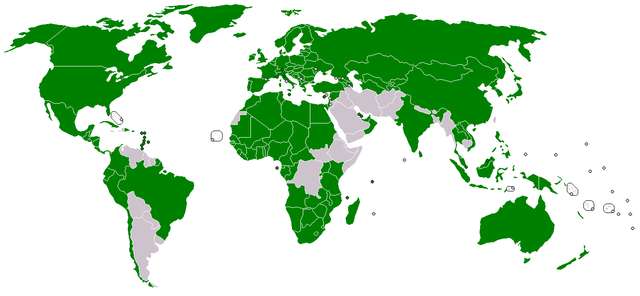There are a lot of internationally accepted treaties which govern the Patent Filing process when an applicant wants to file an application outside his own country. One such example is the PATENT COOPERATION TREATY also known as PCT. In this article we attempt to present a brief overview of the Patent Cooperation Treaty.
The Patent Cooperation Treaty was signed on 19th of June, 1970. The PCT is an international treaty which offers a singular unified procedure which eases the process of filing for a particular type of patent in multiple countries. The Patent Cooperation Treaty was initially signed by 18 nations which volunteered into a contract, today the number of contracting states number at 148.
An application filed for a patent under the PCT is called an International Application or a PCT application. A PCT application basically offers an applicant the option to apply for a patent for a particular invention simultaneously in a large number of countries. By filing a single PCT application, an applicant is saved from the hassles related to filing separate applications in multiple countries or region. The time frame to file a PCT application is one year from the earliest date on which the particular application had been filed. However, it has to be noted that the mere filing of a PCT application does not necessarily result in the grant or rejection of a particular patent. The authority to grant or reject a particular patent rests with the patent offices of the respective nations or regions where the applicant has applied for the same. Thus, the applicant has to undergo the necessary stages according to the laws of a particular nation or a region in order to get the particular patent granted in that specific region. This stage is known as the “National Phase”.
Now, let us take a quick look into the various steps related to filing of a PCT application:
- Filing the Application: This is the 1st stage where an applicant has to file an international patent application with a competent patent office, also known as the Receiving Office (RO). The filing has to be made in one language in compliance with the necessary formalities and the required fees have to be paid.
- International search report: In this stage, an authorized International Search Authority (ISA) conducts an extensive search in order to find the most relevant “prior art” documents which can have a direct influence on the patent. The search authority then provides an International search report along with a written opinion about the patentability of the invention.
- Publication: After the expiry of 18 months from the date of first filing of the application, the International Bureau publishes the contents of the PCT application at the WIPO, which is based in Geneva. This publication may take place in one of the ten prescribed “languages of publication”.
- Supplemental Search Report/ Supplementary International Search: The applicant may however request another ISA for a more extensive search report in order to find any probable prior arts which were not mentioned in the first report. This step is entirely optional.
- International Preliminary examination: The applicant can request an ISA for a preliminary examination which is purely optional. The main objective behind this examination is to obtain a more detailed analysis of the patentability, novelty and industrial applicability of the patent application. If the written opinion established by the International Searching Authority (ISA) is positive, “there is little value to be obtained from filing a demand”.
- Regional or National phase: At the end of 30/31 months (varies according to laws of particular nations or regions), the International Phase of the PCT application expires. At this stage, the applicant can directly file an application in the Patent office of a particular nation where it wants to file the Patent. This phase is known as the National Phase or Regional Phase.
These in brief are the various steps which are involved in the filing of a PCT application or an International application.
Authored by Aniruddha Doss
Image source / attribution here, this image is governed by Creative Commons CC BY-SA 3.0



